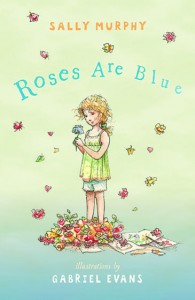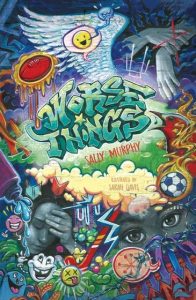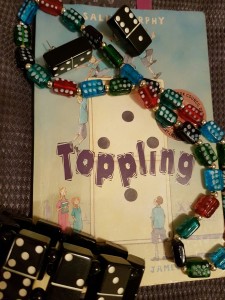Welcome back to my Readalong. (If you’ve just dropped in for the first time, I have been running a Readalong here for the past three weeks, reading (or rereading) and talking about my previous three verse novels, in anticipation of the release of my brand new one, Worse Things, this Friday (only two more sleeps!).
Today, before I move on from Roses are Blue, I wanted to share ten simple things you can do while  reading it, after reading it, or possibly even if you haven’t read it. These are not teaching notes – you can find those here or here. These are ways any reader can explore the book in fun or interesting ways – though if you are a teacher, you could adapt them for classroom use. So, here they are.
reading it, after reading it, or possibly even if you haven’t read it. These are not teaching notes – you can find those here or here. These are ways any reader can explore the book in fun or interesting ways – though if you are a teacher, you could adapt them for classroom use. So, here they are.
-
- Read it. I’ve said this for the previous two books, as well as eleventy million times to the teachers I train at university, the kids I talk to in schools and at festivals, in fact anyone who will listen – the best thing you can do with a book is read it, just for its own sake. Follow up activities can be wonderful, but sometimes a reader just wants to read a book, or to have it read to them. Roses are Blue is perfect to read on your own, or aloud to someone else.
- Blue roses? They’re not a thing are they? In fact, breeding a blue rose is a life goal for some flower enthusiasts. Use a search engine, to see if you can learn more about why blue roses are rare, and who is trying to cultivate them.
- Speaking of blue roses – why not make one of your own. This video shows you how to make a lovely red rose. Use blue paper and you’ll have a blue one!
4. Make a Mothers Day Card. Roses are Blue is a story about mothers and daughters, and is set in the lead up to Mothers Day. Coincidentally, it’s Mothers Day next week – so now is a perfect time to make a card. Maybe a bunch of blue roses too!
5. Examine the cover. Unlike Pearl Verses the World and Toppling, Roses are Blue has only had one cover design, so instead of posting about the different covers, I made the one it has into a digital jigsaw. See if you can beat my time of 3 and a half minutes. You’ll find it here.
6. Compare it. If you have read another of my verse novels, take a few moments to decide which you like best – and why. And I have a giveaway. If you post on Instagram, Twitter or my Facebook page with a photo of one of my books, and a line or two saying why it’s your favourite, I will post a signed bookmark to the first 10 people. Tag your post #readwithsally and send me a message so I can arrange to post it.
7. Paint something. Amber loves painting – and so did her mum. Grab a sheet of paper and some paints – or pencils or crayons or textas – and just create something.
8. Share it. If you loved Roses are Blue, lend it to someone – or, if you borrowed it from a library, encourage your friend to borrow it when you return it.
9. Write a roses are red poem. The original poem – and song – was roses are red, violets are blue, sugar is sweet, and so are you’ but for years and years people have had fun writing silly versions of this poem, or writing similarly serious ones. Here’s my attempt:
- Roses are red
- Violets are Blue
- Actually they’re purple
- But nothing rhymes with purple.
I’m sure you can do something better!
- Read it again! If you love a book, you can read it twice. Or three times. Or a zillion times. And lots of books get better on the rereading, because you notice thing you didn’t notice the first time.
Thanks so much for reading along with me. I hope you’ll drop in Friday – and beyond – as I celebrate the release of Worse Things.

